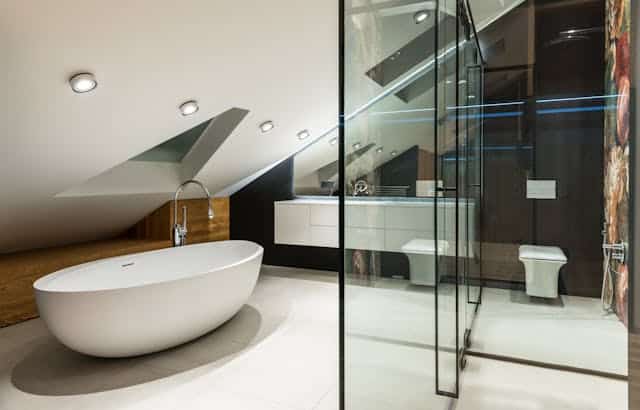In most cases you will need to choose these early on, well before the plastering stage, and the following types are most common:
- Recessed lights, or LED circular lights. In ceilings their configuration needs to be carefully crafted and wired before any plastering goes up. Most common in kitchens and other functional areas. But spotlights can be installed in all sorts of areas, including staircase risers or even skirting boards. Your electrician will need to make sure the product you choose is suited to the application, especially in relation to overheating.
- Ceiling hung fixtures. Over an island the most common configuration is three pendants. You don’t necessarily need to know what type, but you will need to know where they will go including how much space between them before plastering. Chandeliers and other heavy items will require structural supports in the ceiling structure.
- Strip lighting. These are installed on the underside of presses or inside drawers for the kitchen or can be used as mood lighting to highlight architectural features. Their positioning will need to be decided in advance but you can leave the exact choice of product until the budget allows. They also work well in bathrooms.
- Lamps are freestanding and tend to work best in a living room – these can all be controlled from a single switch if you fit 5amp sockets.
- Uplights. These are lights angled upwards and fitted on walls, usually for hallways, to highlight a feature like a beam, or for outdoor purposes.
- Waterproof lighting. Bathrooms require fixtures that do not allow moisture ingress, strip lighting may be possible for effect. Make sure there is a provision for electricity to be available outside, to eventually add lighting and outdoor sockets.
Consider if you want dimmer switches as your electrician will have to wire for these; you will also need to buy dimmable bulbs for the lights.
Your electrician needs to ensure that the installations comply with the building regulations regarding energy efficiency, proximity to detectors, the correct placement of sockets, switches and other controls, as well as light pollution (for exterior lighting).













